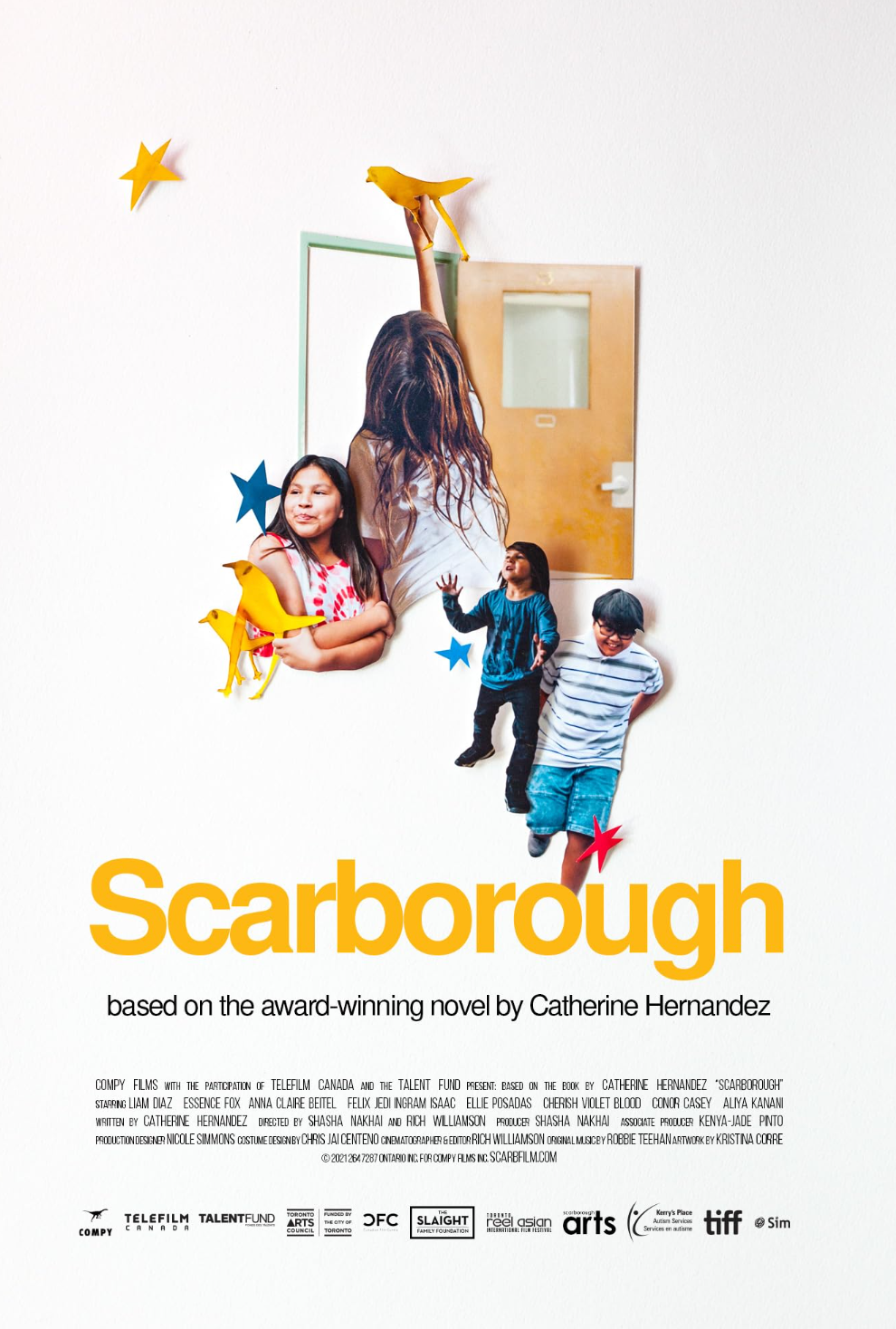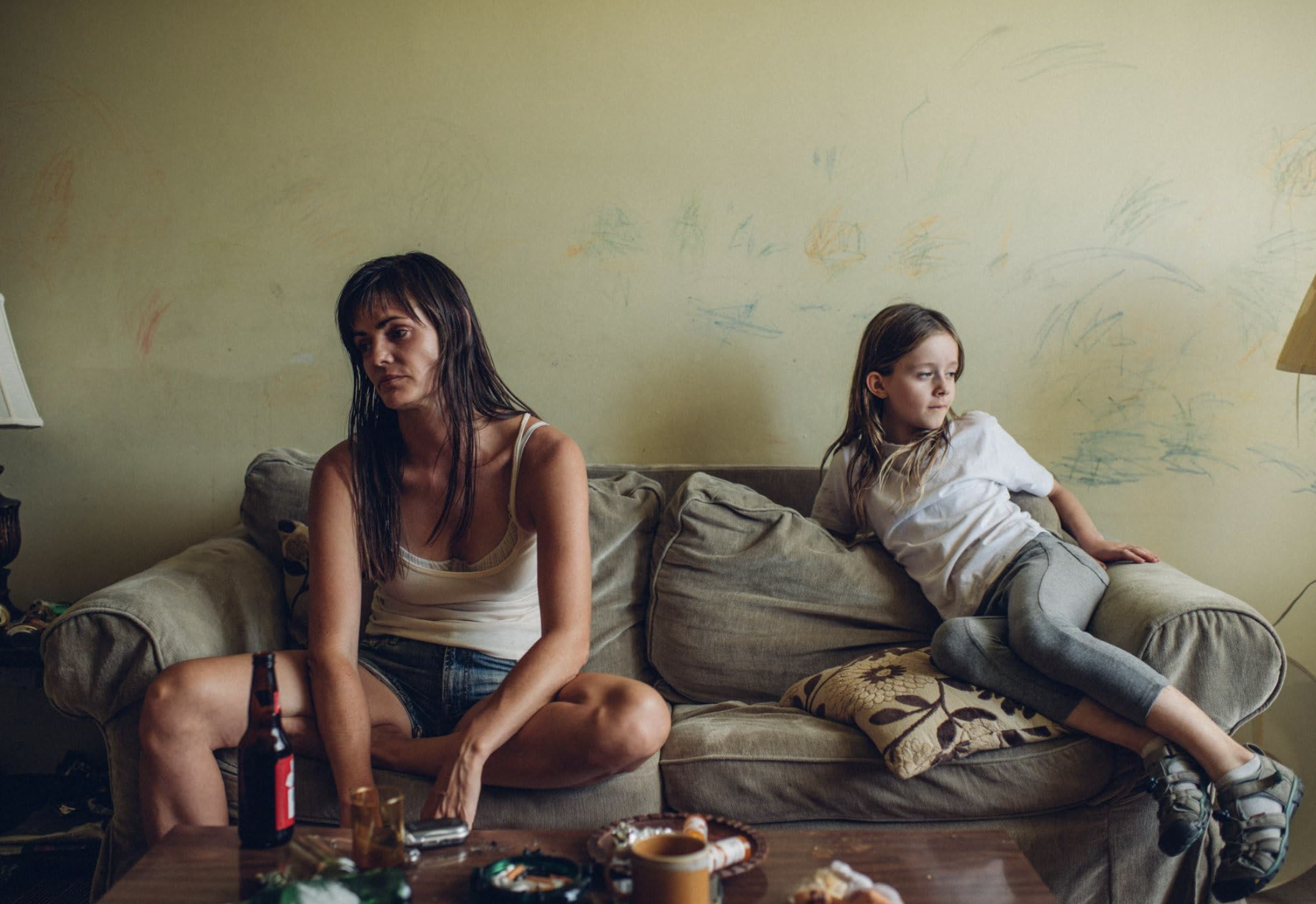From the exterior, Toronto appears to be a flourishing metropolis, a promised land for travellers, refugees, and immigrants alike. However, according to Statistics Canada, as of 2021, Toronto continues to have an income rate lower than all of Canada and Ontario combined. It also has the third-highest child poverty rate among large urban centres in Canada, particularly in neighbourhoods with higher populations of immigrants and racialized groups.
Based on Catherine Hernandez’s novel, Scarborough, this film sheds light on this disparity through the United Nations Sustainable Development Goals for Reduced Inequalities by sharing the interrelated stories of three marginalized children living in a low-income neighbourhood in the Scarborough district of Toronto.

With a population of over 6.4 million as of 2022, the Toronto region is home to a diverse group of inhabitants worldwide. This is particularly the case in neighbourhoods like Scarborough, which has housed immigrants and racialized groups for generations, and accrued a population of 76.6 percent visible minorities as of 2021.
However, statistics have shown that in large urban centres, communities with an influx of marginalized members experience higher rates of poverty.
This issue can be attributed to numerous factors, including lack of access to profitable jobs, shelter costs, poor transportation options, and insufficient support. Although income levels tend to be higher in large cities, residents are more likely to experience poverty due to higher costs of living.
This is especially the case in districts like Scarborough which has the largest one-parent households in Toronto. In central and southern Scarborough alone, rates of child poverty are above 15 percent as of 2020.
“People are working survival jobs and their wages are not enough to raise families. Mom and Dad work around the clock and have to make hard decisions,” says Lee Soda, the Executive Director of the Agincourt Community Services Association (ACSA).
Directed by Shasha Nakhai and Rich Williamson, Scarborough artfully depicts this reality most strikingly through the experience of these three children and their mother, Marie, two of the film’s protagonists.
Early in the film, Marie and two of her three children, stop by a local Caribbean restaurant to pick up a free bag of raw chicken. An Indigenous mother of two, Marie thanks the store’s owner and continues walking with her children to their temporary residence, a small motel room, a few blocks away.
However, she receives a phone call from the hospital about her husband. She has to leave immediately without refrigerating the chicken, causing it to spoil by the time she returns home. From her reaction, it is evident that she is upset by the situation. She had likely intended to use it for dinner that night, given it is a food source that she may have struggled to obtain otherwise.

Food insecurity, a key indicator of poverty, is touched on in this scene and heavily throughout the film. The University of Toronto defines this term as “inadequate or insecure access to food due to financial constraints”, an experience lived by 2.7 million households, including almost 1.8 million children across Canada.
From running out of food and missing meals to being unable to afford a balanced diet, food insecurity is an indicator of “material deprivation” associated with low income, debt, and limited assets.
It is also considered a strong social determinant of health as it is linked to chronic physical and mental conditions, non-communicable diseases, and infections. As a result, people living in food-insecure households have higher rates of hospitalization, greater needs for healthcare services, and an elevated risk of premature death.
According to the City of Toronto, there are specific factors that place individuals and families at a higher risk of food insecurity, including low-income status, single parenthood, and racialized identity, particularly that of Black or Indigenous heritage.
In the film, we see this situation illustrated through Marie as she shoulders the responsibility of mothering her children, while also caring for her Indigenous husband with disabilities.
In a 2021 survey conducted by the Daily Bread Food Bank, data showed that food insecurity is disproportionately experienced by certain populations due to structural oppressions, such as systemic racism and xenophobia, which hinder their access to wealth and vital resources.
Although Indigenous people account for less than one of Toronto’s population, they account for approximately three percent of Daily Bread clients and experience the highest levels of food insecurity in Canada. In a 2020 study, 55 percent of urban-based Indigenous people also self-identified as food insecure, compared to eight percent of other Canadians.
In the Indigenous community, experiences of food insecurity can be directly linked to colonialism, anti-Indigenous policies, and “systemic disinvestment,” which has perpetuated cycles of poverty and intergenerational trauma. This has led to higher levels of mental and physical instability, which is often exacerbated by the realities of urban poverty.
With the additional weight of being the primary provider for her family, Marie’s character is among the 33.4 percent sacrifice of Indigenous people, and 41 percent of mothers with children, living in food-insecure households.
However, a silver lining presents itself in the film. Viewers We are introduced to a childhood educator named Ms.Hina, who helps coordinate a city-led program called the Ontario Reads Literacy Centre.
Throughout the film, the main characters, and many others, are often seen gathering in this space with their families to read books, play games, and spend time together. Recognizing that there is a need for food assistance, participants also receive breakfast in the mornings or snacks if they come by in the afternoon.
During the holiday season, Ms.Hina also goes a step further and hands out bags filled with food, realizing many families will be impacted by the program’s hiatus over the winter break.
Although the program is successful and visibly meets community needs, she is chastised by her supervisor, Jane, who asserts that "community members are always in need and it can be hard to draw a line with them."

Despite its callousness, this statement reflects a harsh truth about Toronto’s urban landscape. Most food-insecure households are working individuals whose incomes fall short of the cost of living, which hinders their ability to meet basic needs. According to the Daily Bread, almost half of food aid recipients often sacrifice food to pay for other competing necessities, such as rent or transportation costs.
However, social connections help mitigate the stresses of poverty. People experiencing food insecurity often lack not only capital, but the social connections necessary to help alleviate financial, emotional, and physical hardship.
“It’s very important for all families to have access to recreational, early childhood education and employment training programs,” according to Dr. Michael Polanyi, Policy and Campaign Manager at Nature Canada.
Being connected to a community can improve one’s health, well-being, and quality of life, and increase access to greater opportunities. In Scarborough, viewers can see how having a space to socialize, learn, and eat with members of their neighbourhood uplifted the spirits of the participants. They were able to commune with others who may have shared lived experiences and who resonate with their circumstances, thus providing them with a safe space to release feelings of guilt, shame, and alienation.
With values of compassion, diversity, and collaboration, and a mission to build stronger and healthier communities, many organizations have been doing the necessary work to help create the equitable, mutualistic society that is needed.
